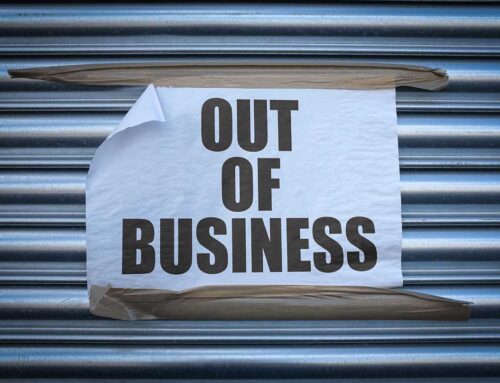Understanding Liquidation Assets
In the ever-evolving business landscape, companies may face challenging times that necessitate a hard but strategic decision: liquidation. At Local Business Rescue, specialising in company liquidations and insolvency work in Scotland, we understand the complexity and sensitivity of this process. This comprehensive guide is designed to demystify the concept of asset liquidation, offering insights into its various facets from types and significance to assessment and valuation.
Exploring Different Types of Liquidation Assets
Liquidation assets are diverse and can range from tangible assets like real estate, machinery, inventory, and office equipment to intangible assets such as patents, trademarks, and customer lists. Each type of asset has its unique market and method for liquidation. Tangible assets are often easier to assess and sell, given their physical nature. In contrast, intangible assets require a deep understanding of the industry and potential future earnings to gauge their true value accurately.
Significance of Asset Liquidation in Business
Asset liquidation plays a crucial role in the lifecycle of a business, especially during insolvency or when a company decides to cease operations. It provides a pathway for businesses to convert their assets into liquid capital, which can be used to pay off creditors, distribute among shareholders, or invest in new ventures. Effective liquidation strategies can mitigate financial losses and potentially salvage the company’s reputation by ensuring creditors are paid to the extent possible.
Key Players in the Asset Liquidation Process
The asset liquidation process involves several key players, each with a vital role to ensure the process is fair, efficient, and maximizes returns. These include insolvency practitioners, auctioneers, appraisers, legal advisors, and creditors. Insolvency practitioners oversee the process, ensuring compliance with legal requirements and equitable treatment of all parties. Auctioneers and appraisers are crucial for valuing and selling assets, while legal advisors help navigate the complex legal landscape. Creditors, on the other hand, are stakeholders with a keen interest in the outcome of the liquidation process.
Assessing the Value of Liquidation Assets
Valuing liquidation assets is a nuanced process that requires considering various factors, including the asset’s condition, market demand, and potential for future earnings. The goal is to determine the most probable selling price in the current market conditions. This assessment is crucial for setting realistic expectations and devising a strategic liquidation plan that maximizes returns while minimizing losses.
Appraisal Methods for Liquidation Assets
Appraisal methods for liquidation assets vary based on the type of asset being evaluated. Common approaches include comparative market analysis, cost method, income approach, and liquidation value assessment. Each method has its advantages and is selected based on the asset’s nature and the liquidation’s objectives. The comparative market analysis is often used for tangible assets, comparing similar items’ sale prices. In contrast, the income approach, estimating future earnings, is more suited for intangible assets.
Tools and Resources for Value Assessment
Several tools and resources aid in the accurate assessment of liquidation assets. Online databases, auction results, industry reports, and professional appraisal services offer valuable insights into current market trends and asset valuations. Advanced software tools can also provide comprehensive analysis and valuation models, especially for complex assets. Leveraging these resources can enhance the accuracy of asset valuations and inform better liquidation strategies.
Best Practices for Accurate Value Determination
To ensure accurate value determination, it’s essential to adopt best practices such as obtaining multiple valuations, considering market conditions, and accounting for liquidation costs. Engaging with experienced appraisers and insolvency practitioners can provide a realistic perspective on asset values. Additionally, transparency with creditors and stakeholders throughout the liquidation process builds trust and facilitates a smoother process.
At Local Business Rescue, our expertise in company liquidations and insolvency work in Scotland positions us as a trusted partner in navigating these complex processes. Understanding the dynamics of asset liquidation, from types and significance to assessment and valuation, is crucial for businesses facing financial difficulties. By adopting strategic approaches and leveraging expert resources, it’s possible to navigate the challenges of liquidation with dignity and foresight, turning a difficult situation into an opportunity for renewal and growth.
Calculating Potential Returns in Asset Liquidation
Calculating potential returns in asset liquidation is a multifaceted process that involves thorough analysis and strategic planning. It begins with a detailed appraisal of the assets to determine their market value. This valuation considers various factors, including the assets’ condition, market demand, and the potential costs associated with selling these assets, such as repair, transportation, and marketing expenses.
Once the assets have been appraised, businesses must then account for the costs of the liquidation process itself, including legal fees, commission to auctioneers or selling agents, and any outstanding debts or liabilities that the proceeds must cover. The difference between the total expected sales revenue and these costs represents the potential return from the liquidation.
To accurately calculate these returns, companies should perform scenario analysis, considering best-case, average, and worst-case sale outcomes. This approach allows for a more comprehensive understanding of the potential financial impact of the liquidation process and helps in setting realistic expectations. Employing financial modeling tools can aid in forecasting these returns, taking into account various market conditions and liquidation scenarios.
Mitigating Risk in Asset Liquidation
Mitigating risk in asset liquidation requires a proactive and strategic approach, focusing on several key areas:
- Comprehensive Asset Evaluation: Accurate and realistic valuation of assets is crucial. Overestimating asset values can lead to disappointing returns, while underestimating can result in lost revenue opportunities. Employing experienced appraisers and considering multiple valuation methods can help mitigate this risk.
- Market Timing: Understanding market conditions and timing the sale of assets to coincide with high demand periods can significantly impact the liquidation outcome. Continuous market analysis and flexibility in the timing of asset disposal can reduce the risk of selling at lower prices.
- Diversification of Sales Channels: Utilizing a mix of sales channels, such as online auctions, private sales, and direct negotiations with buyers, can maximize exposure and attract a broader base of potential buyers. This diversification can also mitigate the risk of depending too heavily on a single sales avenue that may not yield the best results.
- Legal and Compliance Risk: Ensuring compliance with all legal requirements and obligations throughout the liquidation process is vital. Seeking expert legal advice can help avoid potential legal issues, disputes with creditors, or breaches of regulatory guidelines.
- Reputation Management: The manner in which a company conducts its liquidation can have long-term effects on its brand and reputation. Transparent communication with stakeholders and ethical handling of the liquidation process can mitigate reputational risks.
Strategies for Profitable Asset Acquisition
For buyers, liquidation sales offer unique opportunities to acquire assets at potentially reduced prices. However, profitable asset acquisition requires strategic planning and insight:
- Market Research and Due Diligence: Conducting thorough market research and due diligence before acquiring assets is essential. Understanding the true value of assets, their condition, and the cost of any necessary repairs or refurbishments can help buyers make informed decisions.
- Networking and Relationships: Building relationships with insolvency practitioners, auction houses, and liquidation specialists can provide early access to information about upcoming liquidation sales and potentially advantageous buying opportunities.
- Strategic Bidding: Developing a strategic approach to bidding at auctions, including setting strict budgets and understanding the maximum value of assets, can prevent overpaying and ensure profitable acquisitions.
- Leveraging Expertise: Buyers should consider consulting with experts or employing specialists for asset evaluation, particularly for complex assets like machinery, vehicles, or intellectual property. This expertise can be invaluable in making accurate bids and identifying hidden value.
- Asset Diversification: Diversifying the types of assets acquired can spread risk and increase the potential for profitable investments. Understanding trends and demands in various asset categories can guide strategic acquisitions.
By implementing these strategies, businesses and investors can navigate the complexities of asset liquidation, from calculating potential returns and mitigating risks to strategically acquiring assets for profit. At Local Business Rescue, our expertise in liquidations and insolvency in Scotland equips us with the insights and experience necessary to guide businesses and investors through these challenging processes, ensuring the best possible outcomes in difficult situations.









